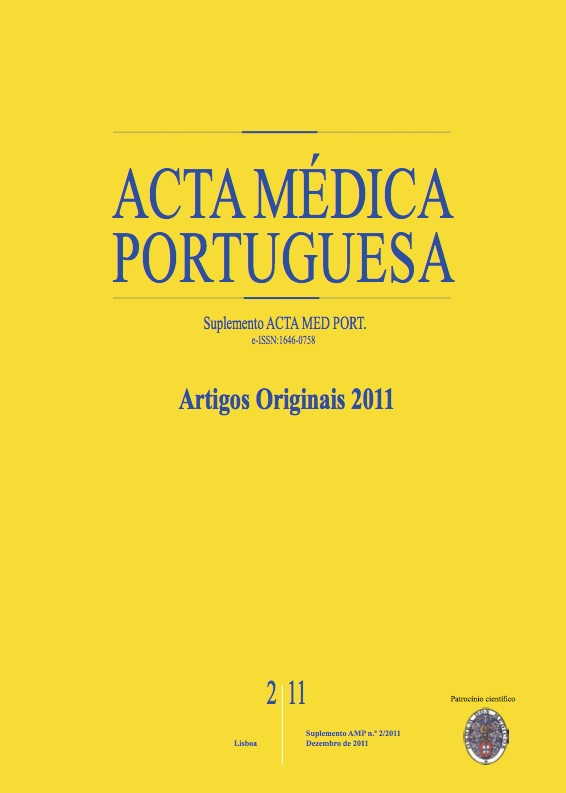Meticilin resistant Staphylococcus aureus and liver abscess: a retrospective analysis of 117 patients.
DOI:
https://doi.org/10.20344/amp.1475Abstract
Liver abscesses are a clinical entity difficult to diagnose and treat; therefore, a high index of suspicion is usually important. The majority of pyogenic liver abscesses are polymicrobial, with enteric and anaerobic bacteria being the most common. Staphylococcus aureus are found in around 7% of the liver abscesses, as reviewed in literature. This infection usually results from hematogenous dissemination of bacteria that's infecting some other organ. There are no published series on this matter, only case-reports.In order to investigate the physiopathology, diagnosis and natural history of liver abscesses, namely those caused by methicillin-resistant Staphylococcus aureus (MRSA), we conducted a retrospective review by studying the clinical files of the patients diagnosed with liver abscess/portal pyemia between January of 2004 and December of 2009, with a total of 117 patients.Fever and abdominal pain were the most common symptoms. Nearly all patients had a CT scan for diagnosis. Only 81.2% of patients had microbiological products collected. The most common pathogen isolated was Escherichia coli. MRSA was isolated in 7.6% of abscesses. Percutaneous drainage combined with antibiotic therapy was the most frequent treatment used. All MRSA isolated were susceptible to trimethoprim-sulfamethoxazole and vancomycin. The underlying conditions most frequently found were biliary diseases, followed by recent abdominal surgery, which in turn was the most frequent predisponent condition in MRSA liver abscesses. The total mortality rate was 17.9%. One patient died in the group of abscesses caused by MRSA.MRSA is an important pathogen in hospital-acquired infections and intraabdominal infections are no exception. We find the association with post abdominal surgery very important. These findings have remarkable implications in therapeutics, prognosis and investigation.Downloads
Downloads
How to Cite
Issue
Section
License
All the articles published in the AMP are open access and comply with the requirements of funding agencies or academic institutions. The AMP is governed by the terms of the Creative Commons ‘Attribution – Non-Commercial Use - (CC-BY-NC)’ license, regarding the use by third parties.
It is the author’s responsibility to obtain approval for the reproduction of figures, tables, etc. from other publications.
Upon acceptance of an article for publication, the authors will be asked to complete the ICMJE “Copyright Liability and Copyright Sharing Statement “(http://www.actamedicaportuguesa.com/info/AMP-NormasPublicacao.pdf) and the “Declaration of Potential Conflicts of Interest” (http:// www.icmje.org/conflicts-of-interest). An e-mail will be sent to the corresponding author to acknowledge receipt of the manuscript.
After publication, the authors are authorised to make their articles available in repositories of their institutions of origin, as long as they always mention where they were published and according to the Creative Commons license.









